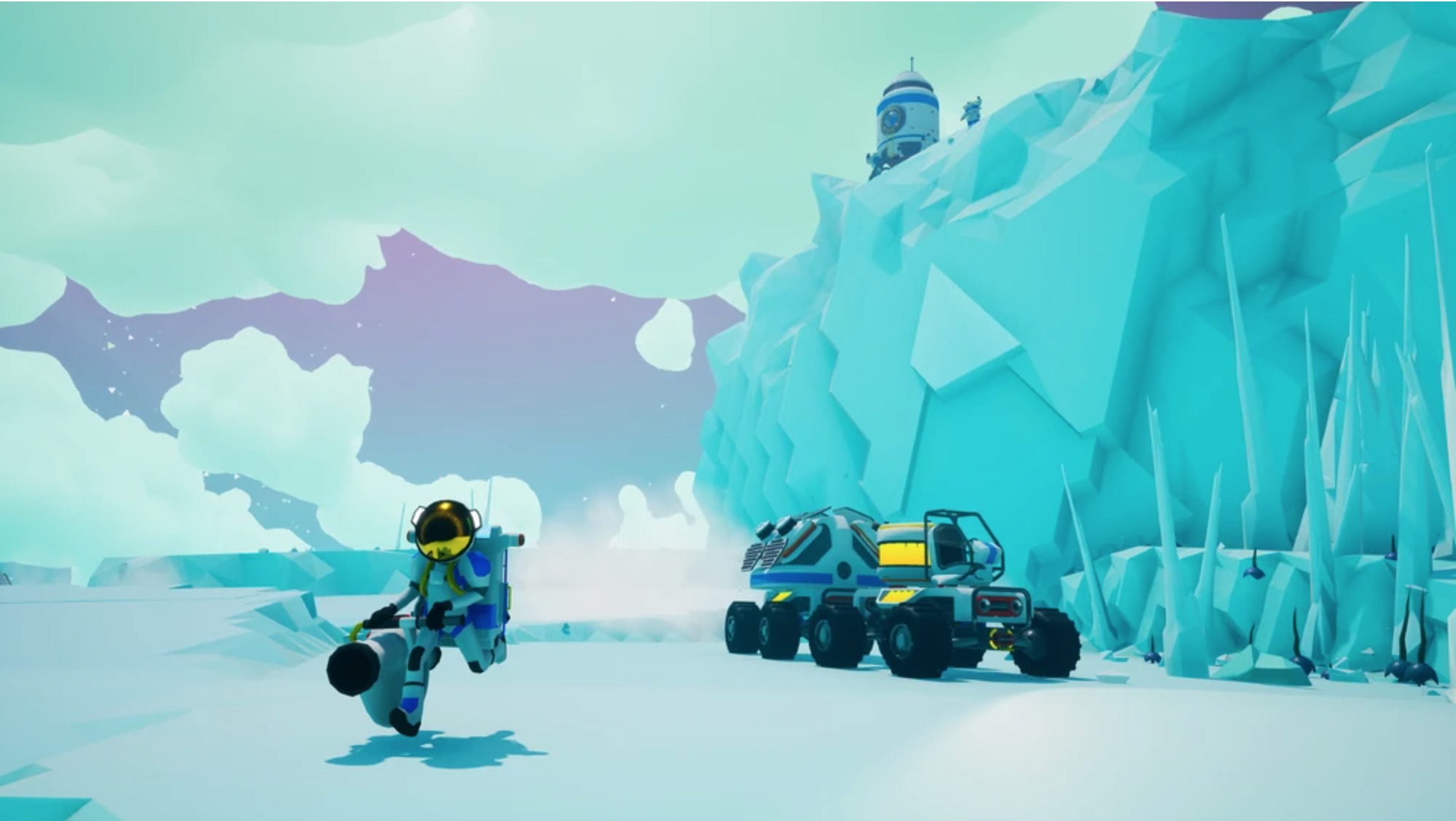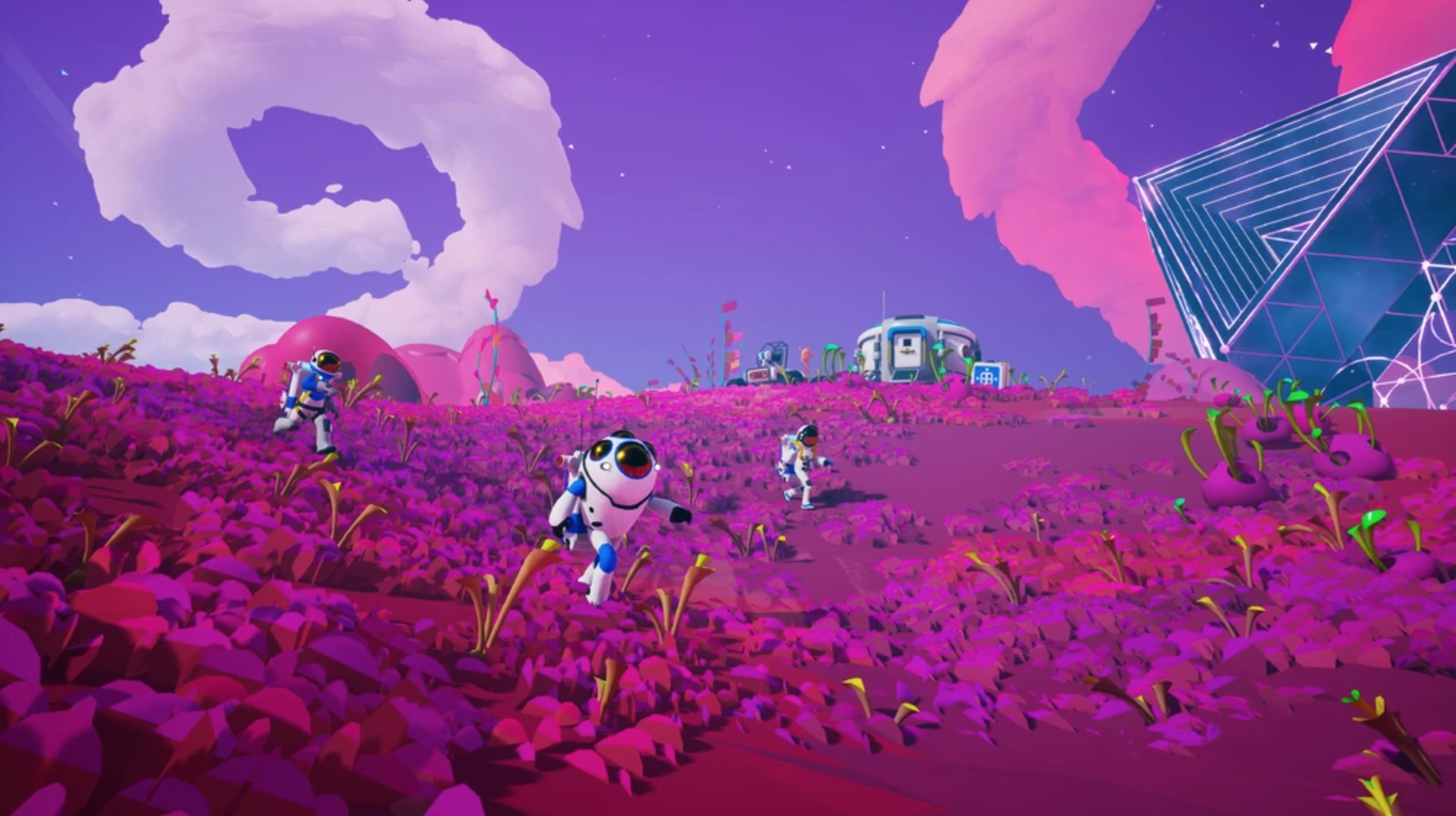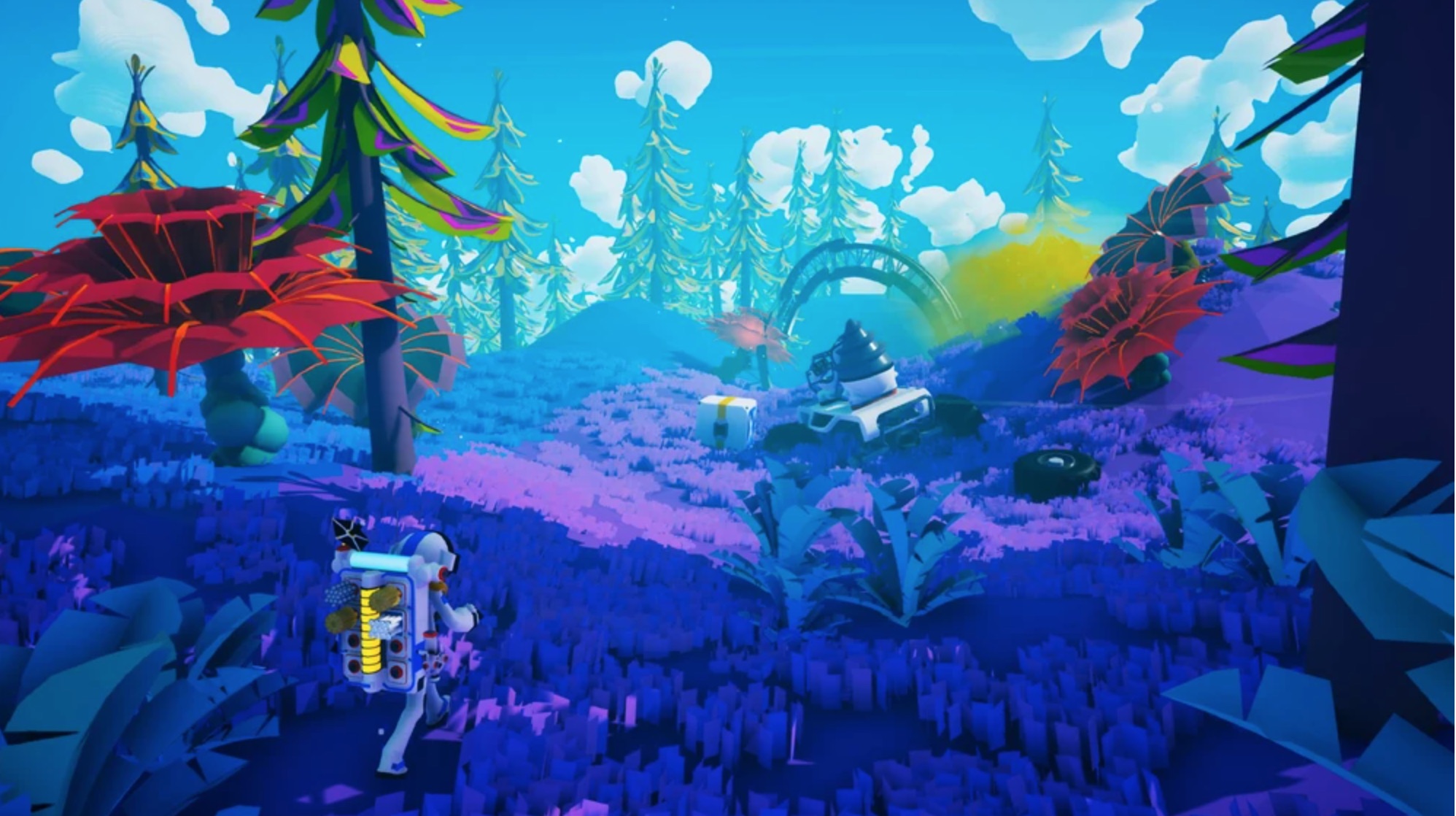'Astroneer' lead designer explains why the sandbox sci-fi game remains so relevant (exclusive)

It's not easy making a mark for yourself in the competitive world of indie gaming.
But that's exactly what the award-winning "Astroneer" has accomplished in its nearly seven years of evolution, drawing in a cadre of fans hooked on its fun gameplay and colorful missions.
First launched in beta back in 2016 for PC and Xbox EA, then expanded to include the PS4 platform in 2019 and Nintendo Switch in 2022, "Astroneer" is a space-themed sandbox exploration and survival game created by System Era Softworks.
Here players are invited to roam the galaxy exploring remote exoplanets during the 25th century, helping to terraform and colonize those planets by mining precious treasures and ancient mysteries. Destinations built into "Astroneer" include the planets Sylva, Calidor, Vesania, Glacio and Atrox and the exotic moons of Desolo and Novus, which all have individual ecosystems, resources and hidden dangers.
Related: Best space games 2023: Outer Wilds, No Man's Sky, Kerbal Space Program and more
Here's the official synopsis:
"Explore and reshape distant worlds in 'Astroneer' — a game of aerospace industry and interplanetary exploration. 'Astroneer' is set during the Intergalactic Age of Discovery, where Astroneers explore the frontiers of outer space, risking their lives in harsh environments to unearth rare discoveries and unlock the mysteries of the universe. Players can work together to build custom bases and vehicles and use terrain to create anything they can imagine. A player's creativity and ingenuity are the key to thriving on exciting planetary adventures!"
Breaking space news, the latest updates on rocket launches, skywatching events and more!
Since it arrived back in 2016, "Astroneer" has attracted 12 million players who return to mold, mine and explore the game's enchanting planets, from surface to core and anything in between. We connected with creative lead Joe Tirado to learn just how the creative gameplay approach of "Astroneer" provides an addictive outlet that differs from other popular space exploration titles.
Space.com: What’s been the recipe for "Astroneer's" sustained success?
Joe Tirado: Gameplay wise, we have had so much fun realizing all the dreams that we have had for the game all the way back to Early Access. When you do something like Early Access, you have lots of ideas of what might make the game good, but players are trusting you to finish the game and are also sharing what they want to see as well. We had a vision for what our 1.0 release was going to look like, and since that launch in 2019 have just been adding more and more gameplay. In the last two years we have added creatures, trains, automation, huge narrative expansions, flying vehicles, custom games, so much content, and on top of that, all for free. So the game has had many new chances with new audiences over time.
Space.com: Can you describe "Astroneer's" art style and form language?
Tirado: This is a fun one for us, because we have this really silly way of explaining the visual style. We sometimes describe "Astroneer" as a mixture of NASA and Playskool. That sounds crazy, but it actually fits what we are trying to do really well. We want the game to feel really tactile, like a toy, so you get a lot of joy out of just snapping things together to see how they work. The colors and shapes are really obvious as soon as you look at things.
The NASA part comes in because we have really deep systems that can get super complex once you realize that everything plays well together. We've had players use our terrain to make really amazing sculptures and art. We also get people who make games like "PONG" and other arcade classics WITHIN our game. They program screens and buttons and logic using physical items in their saves.
Related: The best space exploration games
Space.com: Do you have favorite elements of the game you go back to play?
Tirado: I am a huge base nerd. We tend to have two main player types, the engineers who like to build up infrastructure and obsess over managing power and creating really efficient bases — and I am one of those. We also have the explorer types who love going out and surveying every planet and underground biome, which I normally leave to everyone else.
Space.com: How has the gaming landscape evolved since "Astroneer" launched, especially with sci-fi titles like "Starfield," "Everspace 2," and "Star Trek: Resurgence" entering the market?"
Tirado: It has changed so much. I think for indies, game development has become so low barrier, so you are seeing that literally anyone with a computer can download Unreal or Unity and put out something really good. It reminds me of music in the 2000s, where all of a sudden every laptop had the ability to be an entire band. That comes with some drawbacks though!
I just looked it up, and, in May 2023, over 1,000 games were released on Steam. It is so much harder to stand out, and even when you have a lot of press, that doesn’t necessarily mean that your game will be successful.
Our game has seen titles like "Fortnite" come in and redefine what a "game" really is, and we could have chased that idea, tried to become an all-encompassing game that tries to be everything to everyone, but we really focused in on our game and what makes it special. "Starfield" looks absolutely incredible from what I have seen so far, but a company like ours could never compete with that scale. In this new wave of space games, you are seeing things we never thought could be possible in 2016. We actually released the same year as "No Man's Sky," and I think both our games have done a really great job at keeping our audiences happy with free content while still bringing new people in year over year.
Space.com: Are there any future "Astroneer" add-ons or spinoffs planned?
Tirado: We just released our Custom Games update that allows you to get your hands dirty and really make the "Astroneer" experience your own, but we are definitely going to continue to put out new content for "Astroneer." We are a pretty open development team, so we have been talking to our audience about possibly bringing (a fan favorite) weather back to the game, as well as expanding on the narrative that we have been releasing throughout the years.
We just confirmed that we are doing a second pressing for our graphic novel that we released earlier this year, "Astroneer: Countdown." So, while you wait for our next announcement, you can dig into that!

Jeff Spry is an award-winning screenwriter and veteran freelance journalist covering TV, movies, video games, books, and comics. His work has appeared at SYFY Wire, Inverse, Collider, Bleeding Cool and elsewhere. Jeff lives in beautiful Bend, Oregon amid the ponderosa pines, classic muscle cars, a crypt of collector horror comics, and two loyal English Setters.




